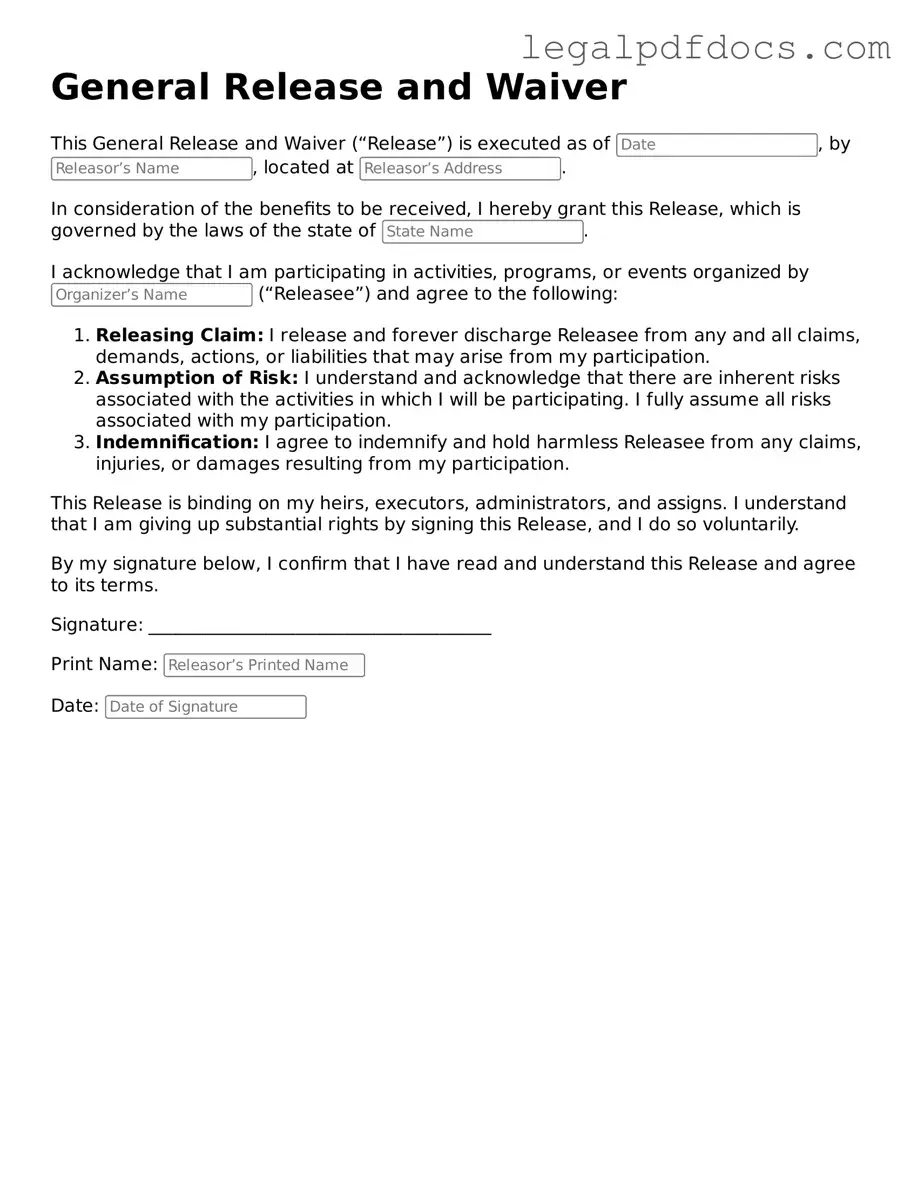The General Release and Waiver form serves as a crucial legal document designed to protect parties from future claims and liabilities. By signing this form, individuals agree to relinquish their rights to pursue legal action against another party for any past, present, or future claims related to a specific event or situation. This form typically outlines the scope of the release, detailing the types of claims being waived, which may include personal injury, property damage, or other grievances. It is essential for individuals to understand the implications of signing such a document, as it effectively limits their ability to seek recourse in the future. The form also often requires clear identification of the parties involved, ensuring that both the releasor and releasee are explicitly named. Additionally, the document may include provisions regarding the consideration exchanged for the release, which can be a monetary payment or other benefits. Understanding the nuances of this form is vital, as it can significantly impact one's legal rights and responsibilities.
